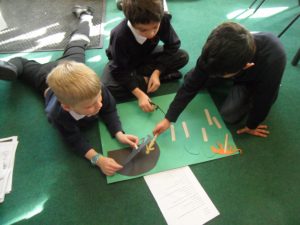A primary school is bucking the trend in Brighton and Hove by persuading the council to propose an increase in its admissions from September next year.
Brighton and Hove City Council is due to vote to increase the number of reception class places at Rudyard Kipling Primary School, in Woodingdean, to 45, up from 30.
Last year, councillors agreed to allow the school to reduce its intake – or published admission number (PAN) – from 60 to 30 pupils in reception in September this year.
But an increase in the number of children in Woodingdean has led to a need to increase it to 45.
Rudyard Kipling head teacher Euan Hanington said that early forecasts for this September showed that the school was likely to be oversubscribed this year.
Mr Hanington said: “More parents than ever are choosing Rudyard Kipling Primary School, recognising the exceptional education, supportive community and fantastic opportunities we provide.
“For September 2025, we are significantly oversubscribed, meaning that a number of families will unfortunately be disappointed.
“With a PAN of 45 in September 2026, we hope to be able to offer a place to all families choosing us as their school of choice, from the Woodingdean community and beyond.”
During the 2021-22 school admissions consultation, parents in Woodingdean campaigned against proposals to cut admissions at Rudyard Kipling Primary School from September 2023.
At the time, Mr Hanington urged the council to bring all the heads in Brighton and Hove together to find a solution to the falling number of children.
This year, the council has not tried to reduce admissions at primary schools, as it did last year, but has focused on the effects of the falling birth rate on secondary school admissions from September 2026.
A series of decisions is due to be taken at a special council meeting from 3pm next Thursday (27 February). The meeting is scheduled to be webcast on the council’s website.









Increasing a school’s PAN from 30 to 45 might seem like a practical solution to accommodate more students, but it can comes with serious drawbacks—chiefly, the shift to mixed-age classes. This change disrupts the tailored learning environment that children need to thrive.
In a classroom of 30, teachers can design lessons that align with a single age group’s developmental stage. Bump that to 45, and schools often mix ages to manage numbers. Suddenly, you’ve got 7 year olds alongside 9 year olds, each with vastly different needs. Younger students may feel overwhelmed, struggling to grasp concepts beyond their readiness, while older ones grow bored or disengaged when lessons slow down for their peers. It’s a recipe for frustration on all sides.
Smaller, age-specific classes improve focus, participation, and academic outcomes. Mixed-age setups, while sometimes workable in tiny rural schools, strain resources in larger settings. Teachers can’t split their attention effectively across a wider developmental spectrum lesson plans get watered down, and individual support dwindles. Kids who need extra help, like those with learning difficulties, risk falling further behind when the teacher’s stretched thin.
There is the social side too. Age gaps affect friendships and confidence, imagine a shy 6-year-old trying to fit in with boisterous 8-year-olds. Bullying risks rise, and younger kids might feel perpetually outpaced.
An admission number of 45 does not necessarily mean mixed age classes. There are other schools in the City with an intake circa 45 that maintain 2 classes in single year groups. Please do not frighten parents away from these good schools.
Hi James
The PAN increase would be in 2 classes ie. 1 of 23 and 1 of 22.
The PAN for most schools used to be 60. So 2 classes of 30
“A school’s published admission number (PAN) is the maximum number of pupils that can be admitted to each year group. The PAN is set by the school’s admission authority.”
Should this end up with mixed classes: One of my children was in a mixed class. It was absolutely brilliant! No age-related bullying, but access to a broader range of the curriculum and smaller groups when doing so. My child learned phonics in a small group of 15. This was for those who were new to it and older children who benefited from another go. My child and a couple of others also accessed higher maths by learning with the older children. Though they moved back to their own year groups after a couple of years the friendship bonds stayed.
I think that a lot of people fear mixed classes because they don’t have experience with them. Children in mixed classes often do better academically and you still have the same number of children per teacher who still gets to know them really well.
Mr Hanington has been the making of the school. Ignore the armchair critics!
My primary school had just two classes to cover all age groups. It worked brilliantly – much greater scope to develop at your own speed. I remember older children helping me, and this really reinforced the learning. Shared learning is also how some of the best universities in world work! You also stay with the same teacher for longer, and build inter-year friendships – so much more like real life than being stuck with a narrow age group.